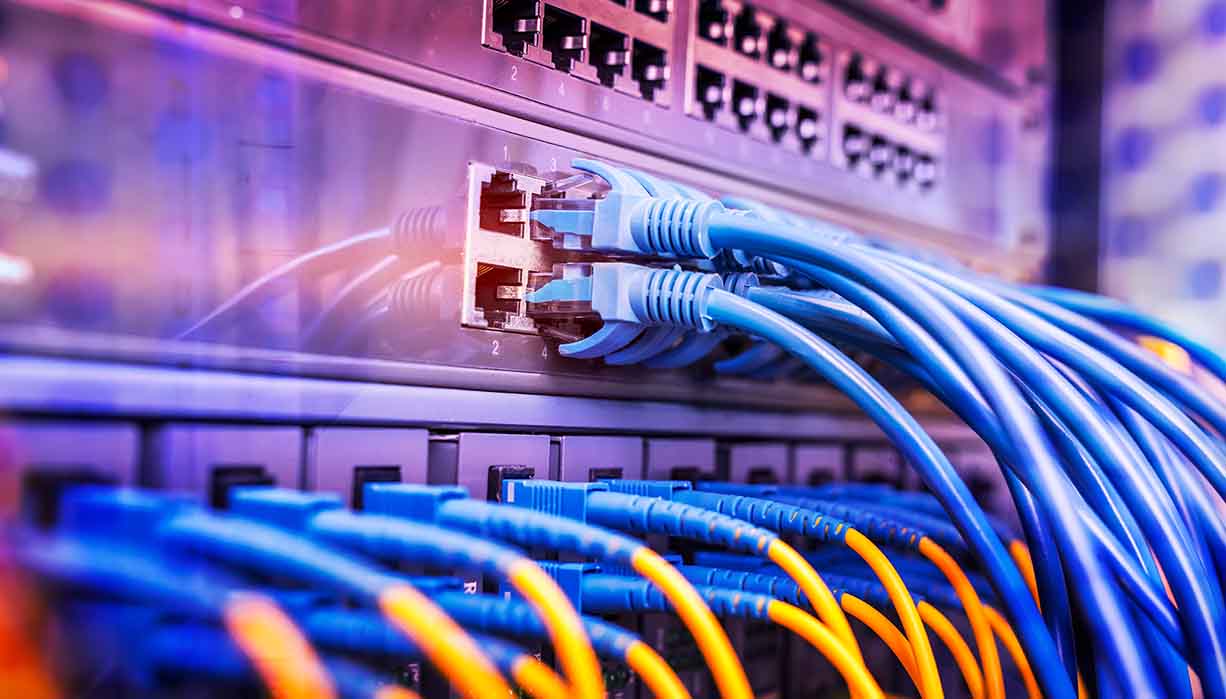Choosing the Right Storage Protocol
If you are a storage expert, you are likely familiar with Fibre Channel or iSCSI. But buying new storage arrays may face barriers of selectivity, such as choosing between Fibre Channel or iSCSI, and determining which is better. Based on their reliability, performance, cost, scalability, and flexibility, we compare the two to help you make an informed decision.
Understanding Fibre Channel in Storage Networks
FC (Fibre Channel) is a high-speed network technology, mainly used in SAN (Storage Area Network) in commercial data centers. The main feature of FC provides lossless and in-order delivery of raw block data, currently running at 4, 8, 16, 32 gigabits per second rates, and the next generation will be 64, 128, … Gb/s. FC typically runs on optical fiber cables within and between servers, switches, and storage servers, but can also run on copper cabling. Choosing optical fiber cable has the advantage of very long-distance transmission but is easy to break.
FC usually means SCSI on FCP (Fibre Channel Protocol) over FC. FC SAN forms a switch fabric because they have to operate together as one large switch. FCP is a transport protocol that predominantly transports SCSI commands over FC networks. FCP is also a thinner, single-purpose protocol that usually leads to low latency. When transmitting, FCP frames are completely offloaded to a dedicated FC chip; this may free the server’s CPU to process the application instead of talking to the storage.
The simplest topology is that two devices are connected directly to each other via point-to-point. Usually, it requires the equipment of FC HBA (Host Bus Adapter), GBIC (Giga Bitrate Interface Converter, an optic electric transceiver), and optical fiber cables. If running FC SAN via switched fabric topology, another FC switch and more GBICs and cables are also required.
iSCSI A Modern IP Based Storage Protocol for SANs
iSCSI (Internet Small Computer Systems Interface) is an IP (Internet Protocol) based storage networking standard for connecting data storage devices. It usually means SCSI on TCP/IP over Ethernet. In detail, it provides block-level access to storage devices by transmitting SCSI commands over a TCP/IP network. Due to IP network characteristics, iSCSI can transmit and manage storage over long distances over IP networks such as LAN (Local Area Network) or WAN (Wide Area Network).
iSCSI is also for a SAN protocol and provides hosts a locally attached SCSI disks. It allows servers (called initiators) to communicate SCSI commands to storage devices (called targets). Currently, the popular Ethernet speed is 1, 10 gigabits per second rates. 40Gb appears in the short term, but there is no roadmap in the future, so 40Gb will not be popular in a few years.
The next popular generation will be 25, 50, 100, …Gb/s. Ethernet equipment is general in a current network environment. You only need to install an iSCSI initiator software with a general NIC (Network Interface Card) and deploy an Ethernet switch, then you can build up an IP-SAN. Even more advanced iSCSI HBA provides an iSOE (iSCSI offload engine) to boost up speed rather than iSCSI encoding/decoding via software.
Fibre Channel or iSCSI
For the past years, storage professionals have debated whether Fibre Channel or iSCSI is the better choice, making it one of the most controversial topics in the storage area. It is almost impossible to reach a consensus on which standard your company is more suitable for. This battle was caused by two major factors:
- FC was first developed in the SAN, the large storage vendors and manufacturers, who invested heavily in the FC market against younger, low-cost, iSCSI products. At the same time, the early companies invested in the FC environment and continued to this day.
- IT administrators used to like what they know and don’t believe they don’t know. If you have been running an FC SAN for many years, you may think that iSCSI is a slow, unreliable architecture and will die faster than running critical services. If you are running an iSCSI SAN, you may think that FC SAN is expensive and cannot be installed and managed.
But are both of the above true? There is no report to describe FC and iSCSI are different at a high level. They encapsulate SCSI traffic and connect initiators to block storage targets, essentially being a local disk drive in a server.
| Fibre Channel | iSCSI | |
| Current Speed | 4, 8, 16, 32 Gb/s | 1, 10, 40 Gb/s |
| Roadmap | 64, 128, … Gb/s | 25, 50, 100, …Gb/s |
| Reliability | Excellent | Good |
| Scalability | Poor | Good |
| Flexibility | Poor | Good |
| TCO (Total Cost of Ownership) | Expensive | Fair to Expensive |
Based only on physics, Fibre Channel is theoretically faster than iSCSI. Fibre Channel does not have to share its path with anyone. But technology is changing, Ethernet media also uses optical fiber cable to connect data, and more bandwidth will be defined in the next few years. At the same time, many iSCSI deployments are superior to Fibre Channel deployments, so we are skeptical about this, but FC still has the features of low latency and high throughput.
Concerning cost, you may think that FC equipment is expensive, but this may have happened 5 or 10 years ago. Nowadays, however, the fastest Ethernet switches are not cheap. In addition, iSCSI can run on any data network. If you need to upgrade your core and storage, iSCSI and its associated cost advantages are obvious. If you are constantly adding nodes and workloads, iSCSI is easier. In addition, if you want to embrace the inherent hyper-convergence, FC is not a suitable option.
FCoE in Modern Storage Environments
For a while, FCoE (Fibre Channel over Ethernet) was raised. It encapsulates Fibre Channel frames over Ethernet networks. This allows Fibre Channel to use 10 Gigabit Ethernet networks while preserving the Fibre Channel protocol. The purpose of FCoE is to integrate these two protocols and deuce equipment costs. But it is not popular nowadays.
Many storage environments don’t use FC and iSCSI at the same time. Even if IT administrators want to use FCoE, they must also purchase new CNAs (Converged Network Adapter, which contains both FC HBA and Ethernet NIC functionality on the same physical card) and FCoE switches. They think that the benefits outweigh the costs.
Evaluating the Best Fit for Your Business Storage
Both of these architectures are suitable for certain tasks. There is no doubt that the debate between FC and iSCSI will continue. However, it is no longer acceptable to say that FC is good for enterprises and iSCSI is good for SMBs. With the increasing popularity of Ethernet technology and the ever-increasing performance of server CPUs, the roadmap of Ethernet has made great strides in phasing the cost and convergence of iSCSI. There is no doubt that iSCSI has achieved better development potential.
No matter what kind of technology you decide to implement for your company, you should try your best to do your homework before buying it. The more you investigate, the better you will make decisions. Visit QSAN for more details to solve your hassles.



